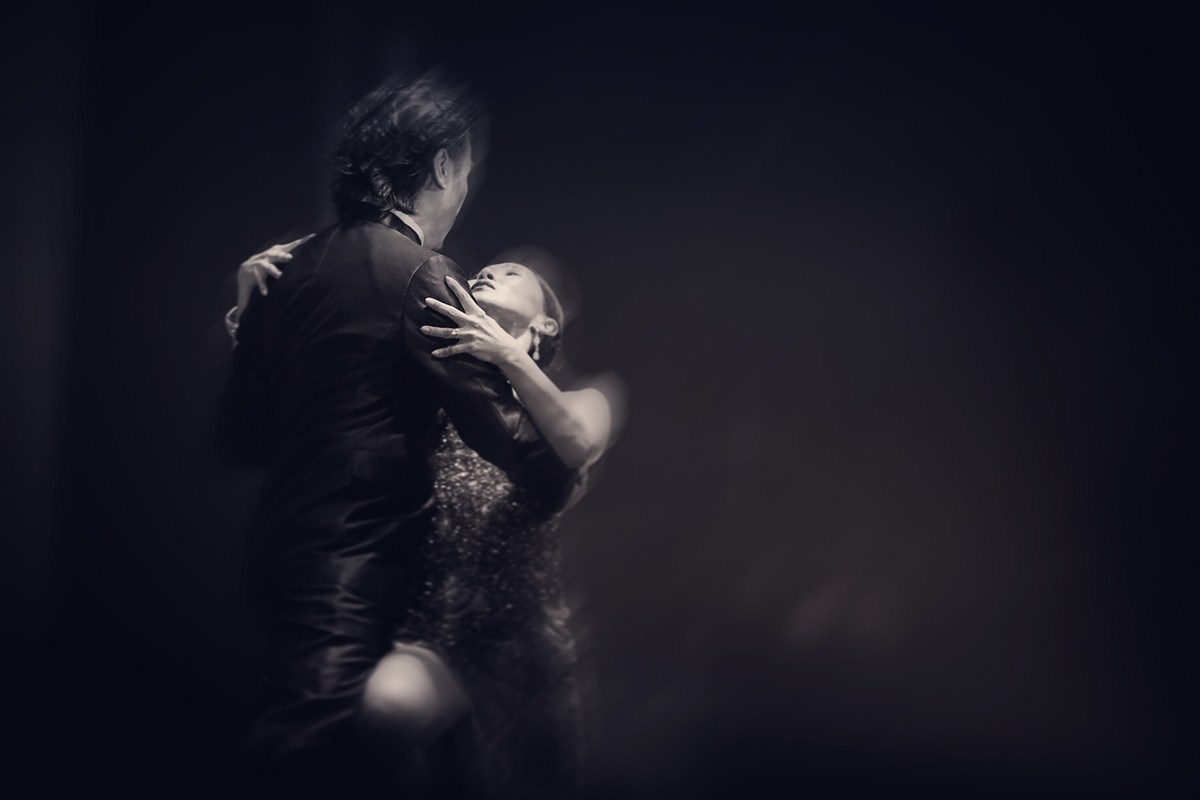I have already danced for 20 years. It is only appropriate to call myself tango middle-aged.
I no longer watch tango videos every day, nor go to milongas five, six times a week. I miss those days on occasion, but I am also happy with now. I like going to milongas when my heart calls for it, and dancing the tandas that are truly meant for me. There is no pressure, no obligation, just following my desire and satisfying my needs.
I am mesmerized by simply watching people dance. Their facial expression and mannerism reveal so much. I can feel who they are, why they dance, and all the drama that is consuming their attention. Tango opens a window into our inner selves for everyone to see. To dance is to be open, in the embrace there is really nowhere to hide. By watching, I get to know people without ever speaking to them, without any direct personal relationship. Sitting in a milonga is never boring, for there is always so much life unfolding all around me.
I have also learned how not to be shy when it is my turn to show myself. The current pope, Pope Francis from Argentina, once joked,
“Do you know how an Argentinian commits suicide? He climbs on top of his ego and jumps.”
Learning how to be egotistical from the Argentinians has been refreshing. Growing up in Hong Kong, I had an Asian upbringing that emphasized the exact opposite. My parents and teachers always tried to impress upon me the importance of humbleness and respect. Luckily my Asian influence is not useless in tango, because respect is necessary to keep the ego in check. The equilibrium between ego and respect produces the most magnificent version of ourselves. The dancers I admire all display an unmistakable sense of pride, but they also never forget to show proper respect – respect for others, for the dance floor, for the music, and for their partners.
Teaching tango has been equally fascinating – it is as much about reshaping minds as imparting body skills. I love the challenge of figuring out why people move and behave the way they do, and inventing methods to help them improve. It is the most rewarding when the students not only raise their dance level, but also gain self-knowledge and build confidence. Depending on the situation at hand, tango teachers sometimes need to be coaches, therapists, or even gurus too.
Like photo filters, tango transforms life by adding colors and enhancing contrast. For countless times I have witnessed how tango brings out the confidence, expressiveness, and desire in people. The more they dance, the hungrier for life they become. Unavoidably there would be instances of disappointment and self-doubt too. As long as we do not give up, sooner or later tango always delivers us from these moments of frustration.
It has been six weeks since milongas and classes stopped in Korea. I have never gone without tango for this long. I have tried to fill the void by cooking, writing, practicing, reading news, watching Netflix, etc. Sometimes it is difficult to keep myself engaged, but I have no complaints. I am simply grateful that in spite of the current global turmoil, my family and I still manage to stay healthy and live well.
Tango connects, the virus separates. For sure tango will prevail, even though we do not know when that day will arrive. Overcoming this crisis will take self discipline, patience, and faith. I am determined to do my part so we can beat this virus together. I am certainly looking forward to the day when I can carry on with my tango middle age.
